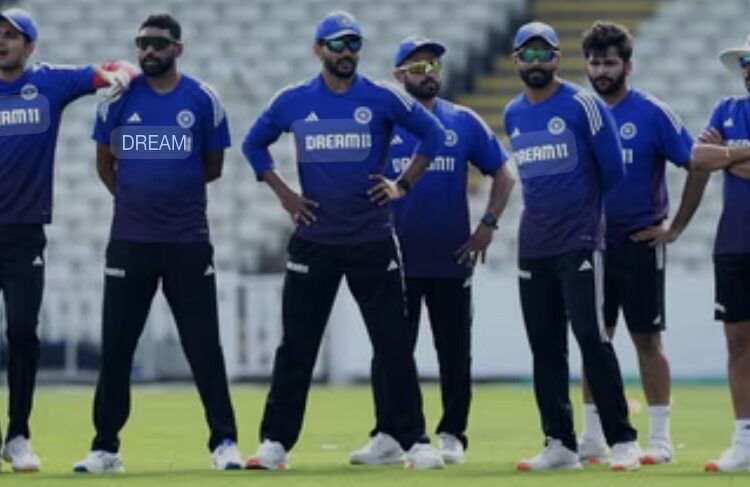At the stroke of noon, a WhatsApp message landed on this writer’s phone: India, without Jasprit Bumrah, would field six bowling options in Edgbaston. (See more on X (Twitter) The big casualty? Sai Sudharsan — the celebrated debutant from the opening Test, and someone who wasn’t coach Gautam Gambhir’s first choice to begin with.
Having lost the first Test largely due to an inability to take 10 England wickets in the fourth innings, the team management decided to bolster the bowling unit by dropping Sai and bringing in another all-rounder. Batting all-rounder Nitish Reddy and bowling all-rounder Washington Sundar were drafted in to partner Ravindra Jadeja, Akash Deep, Prasidh Krishna, and Mohammed Siraj.
It almost felt like India was building a team designed not to win, but to simply survive the second Test in Bumrah’s absence — a setup that hinted at playing for a draw rather than pushing for a win.
Chief selector Ajit Agarkar hit the nail on the head when he said that the Indian team lacks proper Test specialists. But if that’s the case, why is Gambhir being entrusted with the role of Test head coach?
Gambhir could well have stayed on as India’s white-ball coach — a format where the team is far more settled, both in personnel and in performance. The Test side, however, is in flux. This is a team that requires stability, vision, and nurturing — qualities best suited to someone like Sourav Ganguly or VVS Laxman, who not only understand the long-format ecosystem but also have a history of backing young cricketers through tough transitions.
At this rate, India’s World Test Championship campaign is in danger of unraveling. This isn’t just about talent — India has plenty of that — but about how that talent is managed.
What makes it worse is that this is a rare instance of a young Test team where newcomers and debutants aren’t getting the backing they deserve. You can’t build a future-ready side while chopping players after one game. The message being sent out is harsh: perform instantly or perish. That kind of approach is not only shortsighted, it’s damaging. Confidence, especially for a debutant, is fragile — and this management doesn’t seem to value it enough.
It almost feels like Gambhir is forcefully imposing a T20 template onto Test cricket — loading the playing XI with all-rounders when what the team desperately needs right now is a push for specialists.
In a format where precision, patience, and role clarity matter most, this approach is a mismatch. All-rounders offer flexibility, yes — but not at the cost of depth or skill. Test cricket isn’t about covering all bases superficially; it’s about excelling in core roles. Right now, India’s Test side is lacking that edge in both batting and bowling because the balance is tilted too far toward bits-and-pieces cricketers.
Interestingly, this isn’t the first time Indian cricket has faced such a philosophical clash. MS Dhoni too once leaned toward a similar mindset — preferring all-rounders to stretch the batting and fill overs. But the real shift came when Virat Kohli and Ravi Shastri took charge. They went all-in on five proper bowlers, often picking the best attack available — even at the cost of batting depth — because they knew 20 wickets win you Test matches.
That clarity of thought is missing today. Gambhir’s T20-influenced instincts might work in the IPL or in white-ball formats, but in red-ball cricket — especially in overseas conditions — it’s the specialists who win you games. And right now, India is drifting from that principle at its own peril.

















You’re 1-0 down in the series and you ‘rest’ your premier fast bowler. This is not work load management. This is utter foolishness.
Shouldn’t have discarded Sudarshan after just one game. Should have played both Nair & Sudarshan, if the idea was to play Nair at 3, then Sudarshan shouldn’t have played there and broken his confidence. India should go back to five pure batters & Pant for the next game. Hopefully NKR performs in both departments otherwise the decision looks silly
Mohammed A Khan
Great read!